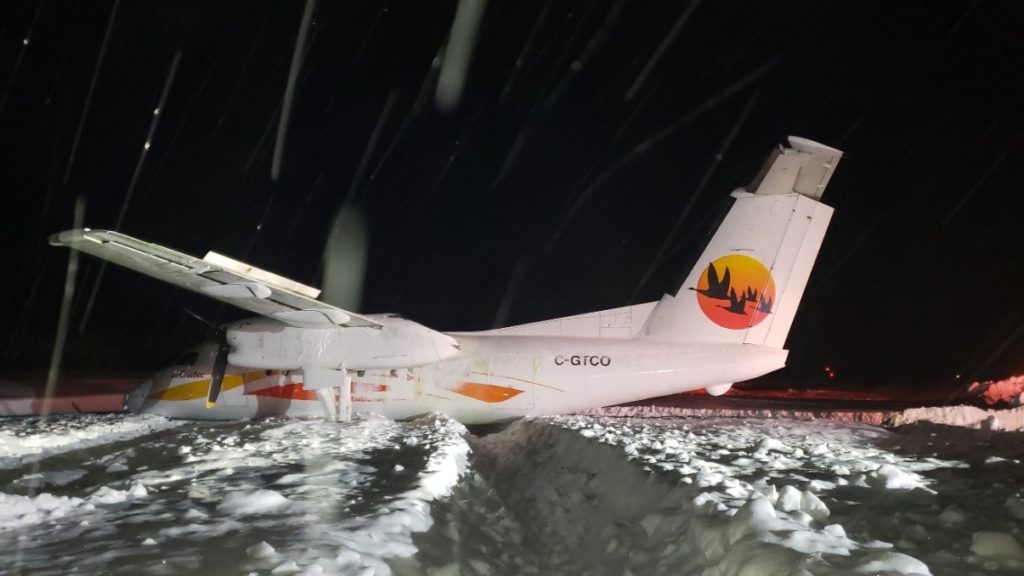Estimated reading time 2 minutes, 40 seconds.
In its investigation report released March 9, the Transportation Safety Board of Canada (TSB) found that ineffective visual monitoring by the flight crew during takeoff and the improper execution of a rejected takeoff led to the January 2019 runway excursion of an Air Creebec aircraft in Rouyn-Noranda, Que.

On Jan. 23, 2019, a de Havilland DHC-8-102 operated by Air Creebec Inc. was conducting a flight from Rouyn-Noranda to Montréal, Que., with three crew members and six passengers on board. During the takeoff roll, the aircraft began to veer to the left and continued to do so until the aircraft rolled off the surface of the runway. When the pilot flying aborted the takeoff, full power was inadvertently added to the right engine, accentuating the deviation. The aircraft came to rest in a compacted snowbank 40 feet from the runway. One passenger received minor injuries and the aircraft sustained substantial damage.
The investigation found that the pilot flying did not look far enough ahead for long enough to notice that the aircraft was deviating to the left before veering off the runway. The pilot monitoring was carrying out other tasks and was not looking out the window to monitor the aircraft’s path. Consequently, he did not notice the aircraft’s deviation and was unable to help the pilot flying correct it. One of the two pilots had significantly more experience than the other, creating a strong authority gradient that reduced flight crew cohesion and thus the effectiveness of their monitoring of the aircraft during the takeoff roll.
The investigation also found that if pilots do not carry out a takeoff briefing, they may not have a shared mental model of the actions that must be taken during the takeoff, increasing the risk of an accident. As well, if the roles and responsibilities of the pilot flying and pilot monitoring are not well defined, monitoring may not be effective, increasing the risk that an aircraft’s deviation from its path may fail to be detected and corrected.
See the investigation page for more information.








